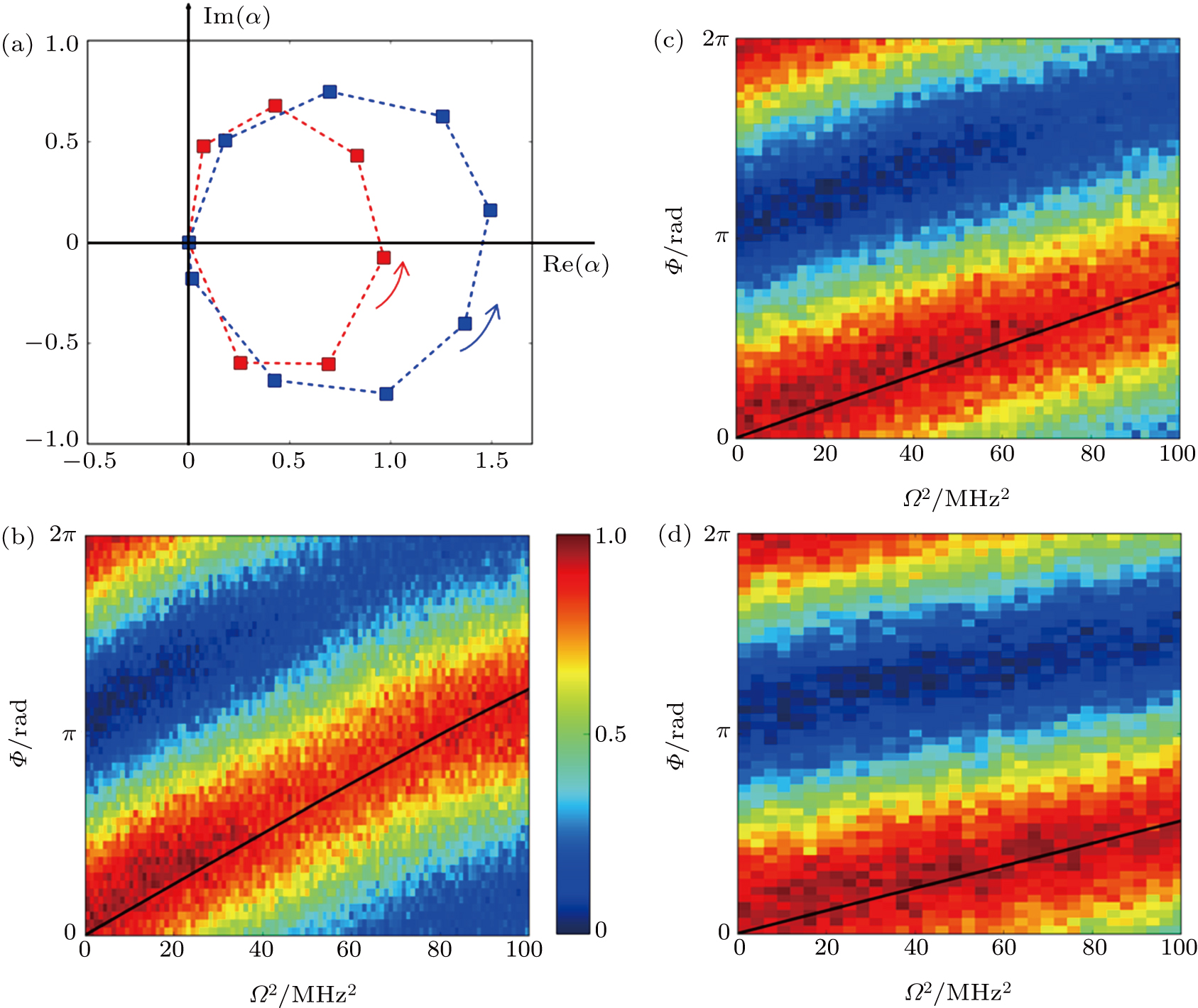(color online) Geometric phase. (a) Exemplary resonator’s phase-space trajectories for the test qutrit in |g⟩ (blue squares) and |e⟩ (red squares) by sampling at a few selected time intervals during the evolutions with Wigner tomography using the ancilla.[28] Some relevant experimental parameters are
 MHz, δd/2π = 10.3 MHz, Δg/2π = 11.9 MHz, and Δe/2π = 18.0 MHz. Dashed lines are visual guides connecting the experimental data points. (b)–(d) Ramsey interferences: probabilities Pe of the test qubit in the excited state |e⟩, with color bar in (b), as functions of Φ and Ω2 for δd/2π = 10.3 MHz (b), δd/2π = 11.6 MHz (c), and δd/2π = 22.2 MHz (d), with T ≈ 170 ns. Other relevant parameters can be found in Table 1. Solid lines are numerical simulations for the dispersively coupled resonator–test qutrit system with the assumption of an extra driving strength of 0.3 Ω to the test qutrit in the full Hamiltonian due to the on-chip microwave crosstalk. For a fixed Pe, the linear scaling of Φ with Ω2 is clearly observed, which, according to Eq. (4), implies that the geometric phase difference β is also linear in Ω2. MHz, δd/2π = 10.3 MHz, Δg/2π = 11.9 MHz, and Δe/2π = 18.0 MHz. Dashed lines are visual guides connecting the experimental data points. (b)–(d) Ramsey interferences: probabilities Pe of the test qubit in the excited state |e⟩, with color bar in (b), as functions of Φ and Ω2 for δd/2π = 10.3 MHz (b), δd/2π = 11.6 MHz (c), and δd/2π = 22.2 MHz (d), with T ≈ 170 ns. Other relevant parameters can be found in Table 1. Solid lines are numerical simulations for the dispersively coupled resonator–test qutrit system with the assumption of an extra driving strength of 0.3 Ω to the test qutrit in the full Hamiltonian due to the on-chip microwave crosstalk. For a fixed Pe, the linear scaling of Φ with Ω2 is clearly observed, which, according to Eq. (4), implies that the geometric phase difference β is also linear in Ω2. |

